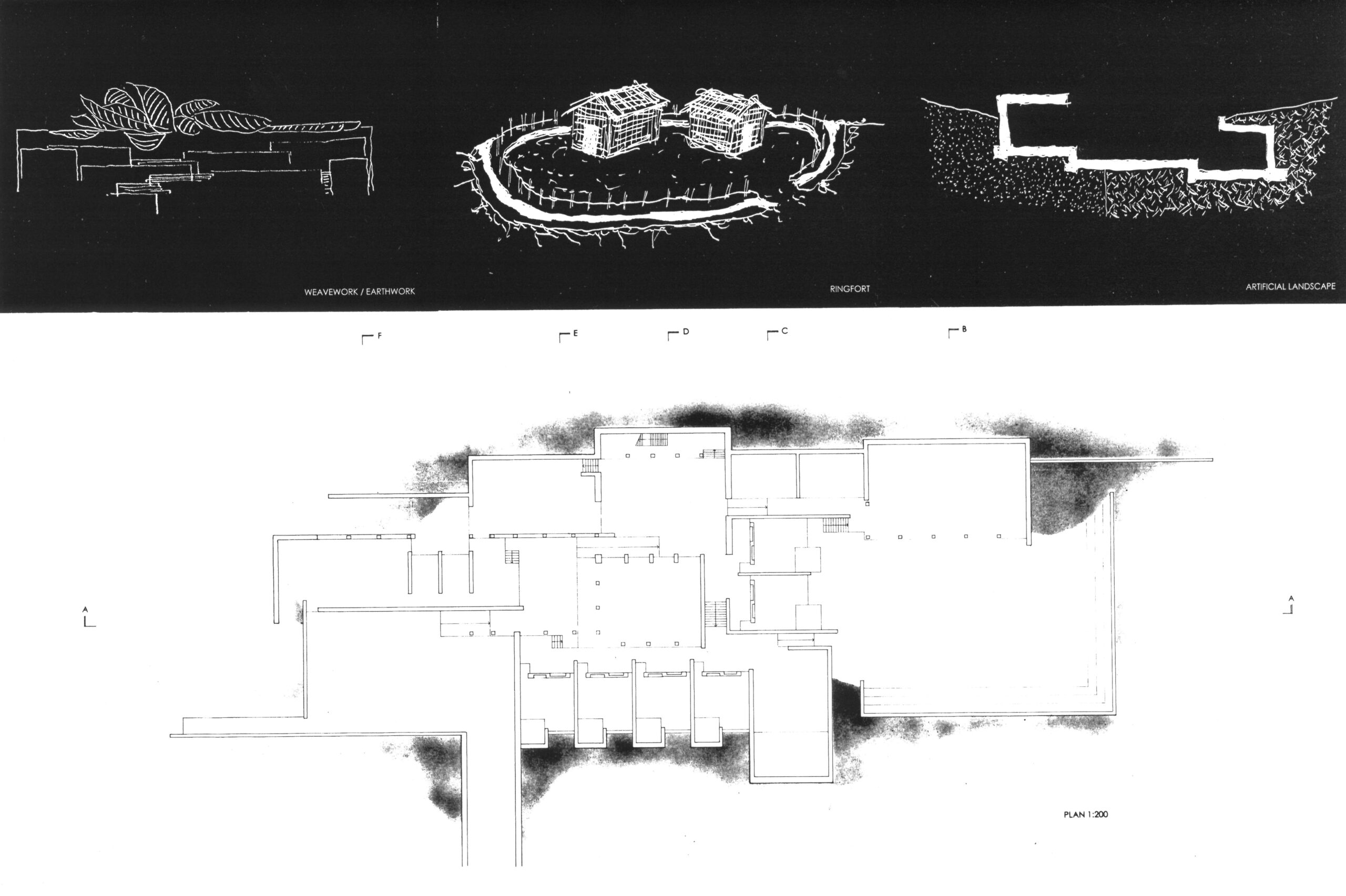I have been exploring the Sligo ground.
Exploring the ground as a deposition of a multiplicity of narratives and texts, ranging from mythology, to archaeology, to geology, to the poetry of Yeats, to contemporary tourist brochures.
Exploring the ground as a source of discovered space.
Exploring the ground as a source of meanings that can be transformed and connected to through building. The act of building must, of its essence, mark the ground, depositing another layer of representation and adding to the complex multiplicity of readings with which this ground is imbued.
I have been exploring how this can be achieved in a meaningful way so as to achieve a resonance with this place.
The house project is sited in the amazing Glen which cuts through the terrain for a mile and a half on the south side of Knocknarea, and which was written about by Yeats. The project was about responding to this by making an incision into the ground. In this way the form of the building was made by this manipulation of the ground and then a series of tectonic planes were added to articulate the spaces and control the views through and across these spaces to the wider landscape.
The subject for the thesis is then a community school and the site is on the other side of Knocknarea, just above Strandhill. The site is located where the field system breaks down and the mountain begins, and is also on a stratigraphical boundary where the hard limestone of the mountain changes to the softer rock and shale below. There are two eighth or ninth century ringforts adjacent to the site.
The thesis has therefore been an exploration of how to achieve a resonance with this place and with these narratives that are contained in this ground. I have attempted to make this artificial landscape using concrete as a kind of third geology, that is inserted between the two landscapes and begins to act as a threshold between them, with one side being buried and the other built up to respond to the different edges.
